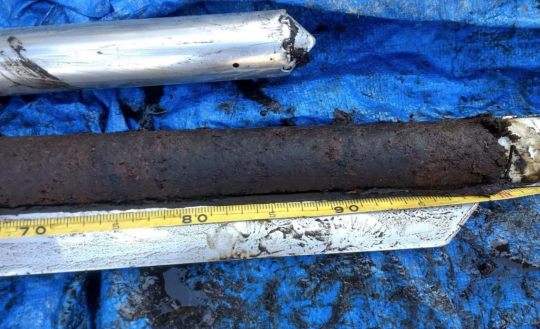Carbon sequestration in wetlands
Carbon sequestration in wetlands
Last year my lab (SQUAL) began a project to assess the total organic carbon (TOC) content of soils and wetland sediments on Campus, FOP and Crane Creek. The project formed part of the BA thesis work of Carlye Chandler. The data collected to date provides a valuable data set for understanding current sequestration of carbon within the greater Copeland Creek watershed. In this request for funds we would like to add a temporal dimension to our understanding of carbon sequestration. Specifically, we would like to collect sediment cores from the campus and FOP ponds. We know that the ponds range in age with Kelly Pond likely the oldest at ~100 years old. Thus analysis of sediment stored below the immediate surface equated to time periods over the past century and to different land management regimes. The field campaign will require using a coring platform in the ponds and the PIs coring equipment. Several student researchers will be involved in the field campaign and 1 student will process the samples in the lab for TOC. Eric Riordan a Geography student will develop aspects of this project into his senior capstone thesis. I have also requested funds to date one core if funding allows. 210Pb and 137CS analysis can be used to date sedimentary material deposited in the last 100 years. This analysis is expensive and requires a specialized lab.
This analysis provided historic information on carbon sequestration trends that have occurred within campus and FOP lands. This data will thus aid in developing future land management practices to maximize and manage sequestration options on campus. The data will be useful for not only campus but also land managers at regional parks, and agricultural land managers.
The ability of an ecosystem to sequester atmospheric carbon and store it long term can be determined by the measure of total organic carbon (TOC) present in its soils. Sequestration studies show freshwater wetlands tend to store more TOC than other terrestrial habitats, however studies of location specific wetlands are lacking, particularly in those of small basin systems. Soil cores and surface samples were taken from three wetland types at the Fairfield Osborn Preserve on Sonoma Mountain: marsh, sag pond, and lake margin wetland. Two methods of quantifying TOC were applied to investigate spatial and temporal variability in sequestration. Preliminary results show lake margin wetlands have notably higher quantities of TOC at the surface, yet analysis of soil cores indicate minimal variation among the sites in carbon stores at depth. Further research will explore additional wetland sites, and environmental factors that may influence sequestration.
We would like to extend our analysis of wetland sediments and their organic content to include the Sag Pond at FOP. The sag pond was originally sampled in 2014 (by students in Geography 317) and sediment samples were archived. Eric Riordan (senior in GEP) processed the archived samples for Total Organic Carbon (TOC) and carbon and nitrogen isotopes. We request funds to support the cost of this analysis. This material will be integrated into the ongoing Carbon Sequestration studies by the Goman group at FOP. This will comprise a portion of Eric's senior thesis.
Chandler 2018: Soil cores and surface samples were taken from three wetland types at the Fairfield Osborn Preserve on Sonoma Mountain, and total organic carbon (TOC) was quantified. Preliminary results show lake margin wetlands have notably higher quantities of TOC at the surface, yet analysis of soil cores indicate minimal variation among the sites in carbon stores at depth. *Winner of the 2018 Best Poster Award*
Riordan 2019: This data is directly related to understanding the ecosystem services that wetlands contribute with regards to tools to mitigate climate change. This knowledge will both benefit managers of FOP in decision making for the preserve as well as aid the campus goal towards reaching its commitment in sustainability and climate resilience.
| Title | Format | Download | Students |
|---|---|---|---|
| "Anthropological and environmental factors impacting climate change mitigation through carbon sequestration: an evaluation of elevation, vegetation, fire and land use" | poster | Carlye Chandler | |
| "Carbon Sequestration in Wetlands of Sonoma Mountain, California" | poster | Eric Riordan |
Project Date:
2018 to 2019
Faculty:
- Michelle Goman
Departments:
- Geography Environment and Planning
Partners:
- Center for Environmental Inquiry
Students:
- Senior thesis
Locations:
- Fairfield Osborn Preserve
- Sonoma County
- SSU Campus
Project Topics:
- Climate
- Water
Funding Sources:
- Waters Collaborative





